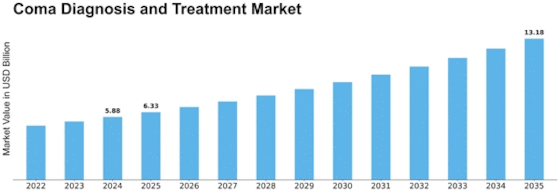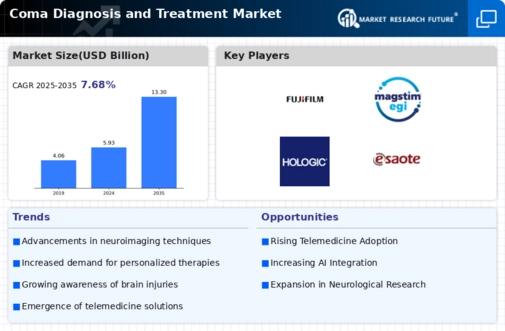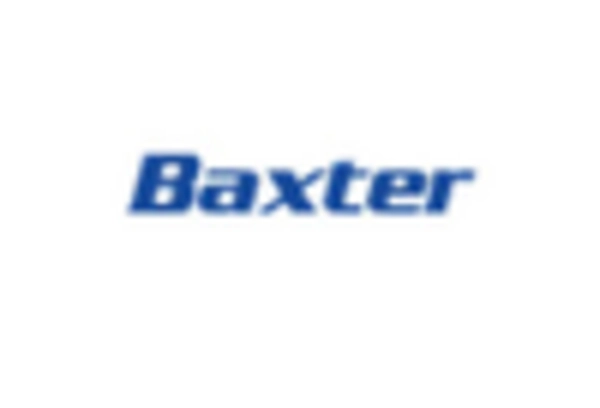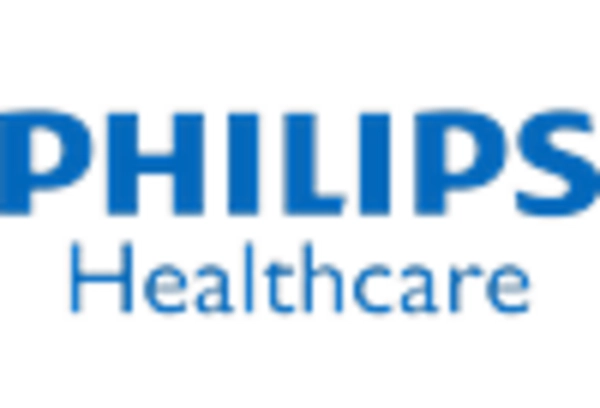Coma Diagnosis And Treatment Size
Coma Diagnosis and Treatment Market Growth Projections and Opportunities
Market analysis requires knowledge about coma prevalence and incidence across demographics and geographies. Traumatic injuries, strokes, and medical problems such infections and metabolic disorders affect prevalence rates and market demand for diagnostic and treatment services. Advanced diagnostic tools like CT scans and MRI help diagnose and evaluate coma origin and severity. Improved diagnostics drive desire for early intervention and coma-specific therapy. Coma treatment options, including supportive care, pharmaceutical therapies, and neurorehabilitation, must be assessed. Treatment accessibility, healthcare infrastructure, and neurocritical care advances affect market dynamics, patient outcomes, and healthcare resource allocation. Market innovation comes from coma pathophysiology R&D and innovative therapy development. R&D shapes market growth and competitiveness by discovering novel therapeutic targets, increasing treatment results, and meeting unmet patient requirements. Market dynamics depend on coma diagnostic and treatment device, medicine, and procedure approval and marketing regulations. Regulatory compliance, faster paths for novel medicines, and reimbursement rules affect market penetration and product uptake. Access to coma diagnosis and treatment depends on the availability of neurocritical care units, rehabilitation institutes, and long-term care institutions. Spending, insurance, and critical care infrastructure development impact market dynamics. Public understanding of coma, its causes, and treatment choices is crucial for earlier intervention and better patient results. Educational programs for patients, caregivers, and healthcare professionals shape coma management market demand and policy. Healthcare spending and critical care reimbursement rules affect coma treatment cost and accessibility. Government healthcare funding, private insurance coverage, and patient and family out-of-pocket costs affect coma diagnosis and treatment market dynamics. Coma diagnostic and treatment firms compete with medical device, pharmaceutical, and healthcare providers. Stakeholder collaboration and interdisciplinary care advances drive market dynamics, innovation, and patient outcomes. Understanding coma risk factors including age, gender, and medical problems helps find market potential and adapt healthcare treatments. Demographic changes affect resource allocation, treatment tactics, market demand, and tailored treatments for particular patient groups. Market expansion strategy must include developing areas with rising healthcare infrastructure and high critical care demands. In these locations, legislative issues, market access hurdles, and cultural factors affect market penetration and product acceptance. Watching neurocritical care advancements like wearable sensors, telemedicine platforms, and neurostimulation devices may reveal future market patterns and coma treatment potential. More precise diagnoses, individualized therapy, and remote monitoring options improve patient outcomes and market reach as technology advances.


















Leave a Comment